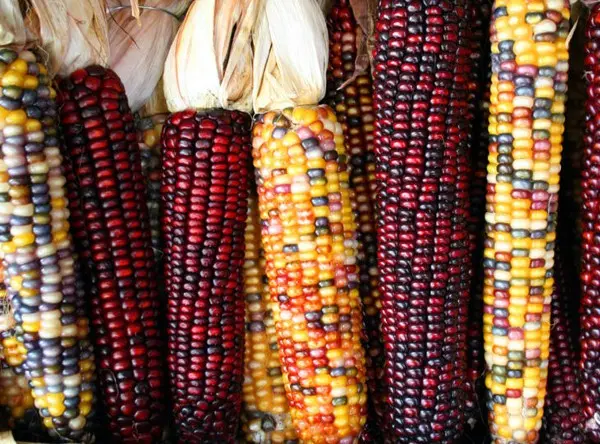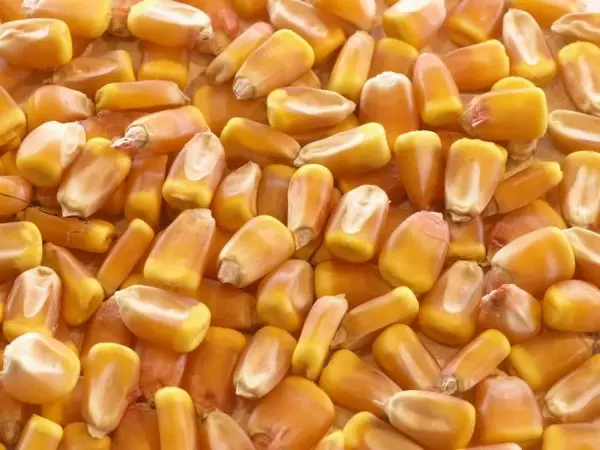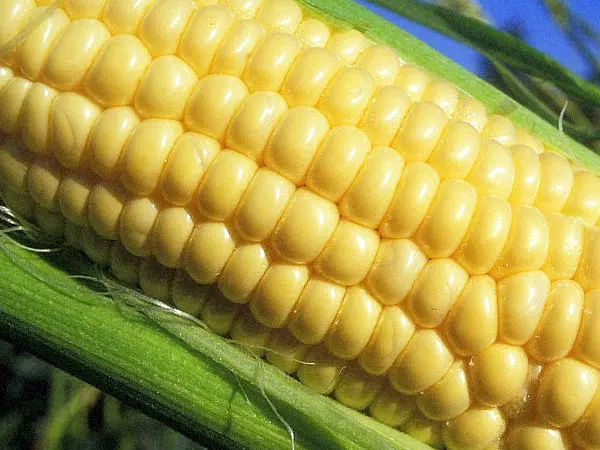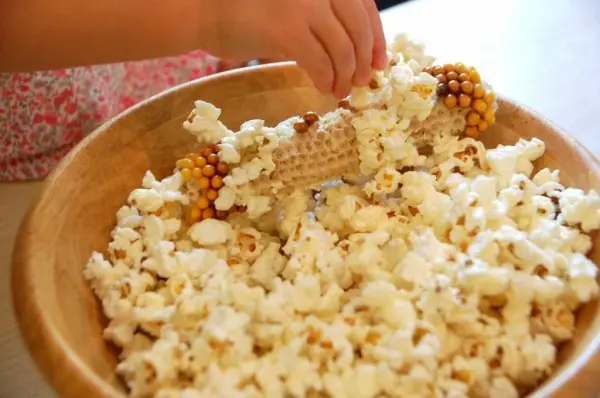Contents
Choosing plants for our garden, we try to choose not only the most productive varieties, but also the most delicious ones to please ourselves and our families. Corn is not only no exception, but, perhaps, the banner of this rule. In this article, we will look at the varieties and best varieties of corn, how to grow grain and care for the crop, and also find out what the Bonduelle variety is.
Description and characteristics of culture
Corn belongs to annual herbaceous plants, often tall with a stem up to 3 m. The main agricultural purpose of growing this crop is cobs and edible grains. The plant has a developed multi-tiered root system. The leaves are large, reach a width of 10 cm, and often grow up to 1 m in length. The culture loves warmth, tolerates drought well, and does not grow well in the shade. Vegetation takes from 65 to 150 days. Maize blooms approximately on the 60th day (depending on the variety), reaches the stage of milky ripeness on the 70-80th day.
It is difficult to underestimate the nutritional value: cobs contain vitamins of groups B, C, E, in addition to potassium, fluorine, phosphorus, calcium, iodine, boron, iron, that is, all the elements necessary for a healthy human body. There is also a high content of fats and proteins, which are many times higher than the amount of these elements in other crops. Calorie content of 100 g of corn kernels – 85,7 kcal.

You can grow a crop, both using grain, from which seeds are obtained after processing, and by pre-growing seedlings.
Subspecies of common corn
Types of corn shine with variety: siliceous, dentate, bursting, starchy, waxy, sugary, filmy. Hybrids of culture are numerous, they combine the key characteristics of different species.
Dent corn has a large, slightly elongated and flat grain. The grain is covered with a hard shell on the sides, but at the same time the center and upper part are farinaceous, friable. Of all the varieties, it is the tooth-shaped one that is most often planted in personal plots. Seeds are used not only for planting next year, but also to create cereals, alcohol, animal feed, and flour. It is also grown for silage.
Rounded, smooth grain in flint corn. The shell of the grains is horn-shaped, flouriness is noted only in the center. This is the most common type in the world. Siliceous is grown for grain for the production of cereals, flour, flakes, and everyone’s favorite corn sticks.

Starchy is most common in South and North America. Plants of this variety are usually medium-sized, late-ripening. Their grain is round, smooth, loose. This species is mainly grown to create alcohol and starch.
Waxy corn is a modification of dentate varieties and is characterized by a two-layer shell. It was the external resemblance to a drop of wax that served as the name of the species, however, in terms of strength, this shell is close to the bursting variety. The inside is mealy, contains a large amount of amylopectin, which is sticky.
One of the most popular varieties is bursting. It is from it that crispy, fragrant popcorn is obtained. The grain is rice and pearl barley, has a high specific gravity, flouriness is observed only near the embryo.
Sweet corn is high in saccharides and highly valued worldwide for its tender grains. Their shell is thin, contains a minimum amount of starch, which is why the grain shrinks when dried. By the way, everyone’s favorite “Bonduelle” mainly consists of various varieties of sweet corn.

And finally, the rarest variety, due to its uselessness, is hulled corn. It is characterized by abundant growth of spikelet scales, which cover the grain with a shell. It is not used on the farm.
Red corn (it is also “black corn” in some regions) – a variety of maize came to us from the depths of Peru. Its grain, which is used both for food and for seeds, is colored maroon, almost black, due to anthocyanins. Cultivated in Peru, black corn has many health benefits due to its high amount of antioxidants. Often, black corn is included in the diet menu to improve the metabolism in the human body.
Varieties of sweet corn
Varieties of sweet corn are very diverse, characterized by high yields and often a short growing season. It is from them, as noted earlier, that the product consists, which many mistakenly consider the Bonduelle variety.
Dobrynya corn has an incredibly sweet taste, as well as large cobs. Early ripening helps to be among the first to get juicy cobs and either eat them on the spot or send them for processing. The bush grows up to 170 cm in height, unpretentious to the type of soil, has increased resistance to mosaic, rust and wilt.

Another variety with a sweet grain structure is Lakomka 121. The variety has a high yield, increased immunity to most diseases, and a short growing season. Having reached the stage of milky ripeness, the cobs of this variety are very tasty both boiled and canned.
Early golden 401 refers to low-growing varieties with an average growing season. Cobs grow up to 19 cm long, are used at the stage of milky ripeness. At the same time, the variety as a whole is resistant to most fungal and bacterial diseases.
Describing varieties of corn, one cannot ignore Spirit F1. This variety is one of those that are convenient to grow through seedlings – so it yields a crop within 2 months after planting in open ground. Spirit bean has a high sugar content, making it one of the sweetest varieties. Cobs in length reach 20 cm.
But the numerous trademarks of canned corn “Bonduelle”, “Vernet”, “Eco” actually use in the production not a particular variety of corn, but a mixture of different varieties.

popcorn
The favorite delicacy of cinema goers is popcorn made from popcorn grains. The low content of starch, but at the same time a high content of fats, proteins and a strong but thin shell make possible a small “explosion” of each grain when heated. The fact is that the shell does not crack immediately, but allows moisture to be pumped inside, fluffing the pulp outward when critical pressure is reached.
The Vulkan variety is one of the best, whose grain is suitable for making popcorn. The bush grows up to 2 m, and the cobs up to 22 cm. The grains are yellow, rice. The variety shows high resistance to diseases and weather conditions.
The Lopai-Lopai variety is mid-early with yellow grains and cobs up to 21 cm long, grows up to 1,7 m in height, and is distinguished by good disease resistance.
The Zeya variety is the same red corn that is so loved in Peru. The bush grows up to 1,8 m, cobs up to 20 cm. An early ripe variety in dry weather becomes similar to a species very close in area of origin called black corn.

Features of care
It does not matter how you planted the crop – through seeds or seedlings, the care for it is the same. After rain or watering, you need to loosen the ground so that the roots receive enough oxygen. Be sure to remove weeds from the garden. These two care points illustrate why the wild variety of corn does not grow large, sweet, and rarely eatable.
After the phase of 5-8 leaves, stepchildren will appear on the stem, which must be removed so as not to slow down the vegetation of the plant. Be sure to thin out seedlings in the first weeks of life of corn in the garden in order to grow only the strongest shoots that will give a greater yield.
Also, corn hybrids respond well to organic and mineral fertilizers, so do not spare manure, potassium, phosphorus, nitrogen for beds. And then you will grow corn, which taste will not yield to the Bonduelle brand product.
Video “The best variety of corn for the middle lane”
In this video, the author summarizes the results of the season: what happened from planting different varieties of corn in the Moscow region.









